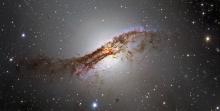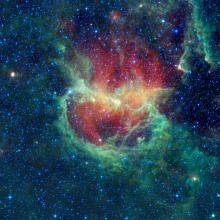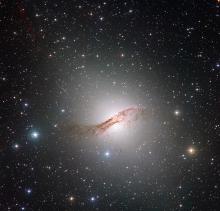Listen to today's episode of StarDate on the web the same day it airs in high-quality streaming audio without any extra ads or announcements. Choose a $8 one-month pass, or listen every day for a year for just $30.
You are here
Menkent
As you look out into the night sky, you might think that you’re seeing a representative sampling of the stars — in other words, a little of everything. That’s not the case, though. In fact, most of what you see is the Milky Way’s equivalent of the one percenters — stars that are among the galaxy’s brightest.
An example is in the constellation Centaurus, which wheels quite low across the south on June nights. It’s so low, in fact, that much of it stays below the horizon for those of us in the United States. That includes its brightest star, Alpha Centauri.
The brightest star most of us can see in Centaurus is Menkent, a name that means “shoulder of the centaur.” It’s low in the south at nightfall.
Like many of the other stars that are visible to the unaided eye, Menkent looks so bright because it’s nearing the end of its life. It converted the original hydrogen fuel in its core to helium. That made the core get smaller and hotter, which in turn made the star’s outer layers puff up. Now, Menkent is more than 10 times the Sun’s diameter, and about 60 times the Sun’s brightness.
Dying stars like Menkent are rare — most of the galaxy’s stars are still in the prime of life, so they’re not as bright as they’ll become later on. But because rare stars like Menkent are so big and bright, they’re greatly over-represented in the stars we see — stellar giants shining brightly in the night sky.
Tomorrow: a nearby planet that shines brightly in the morning sky.






